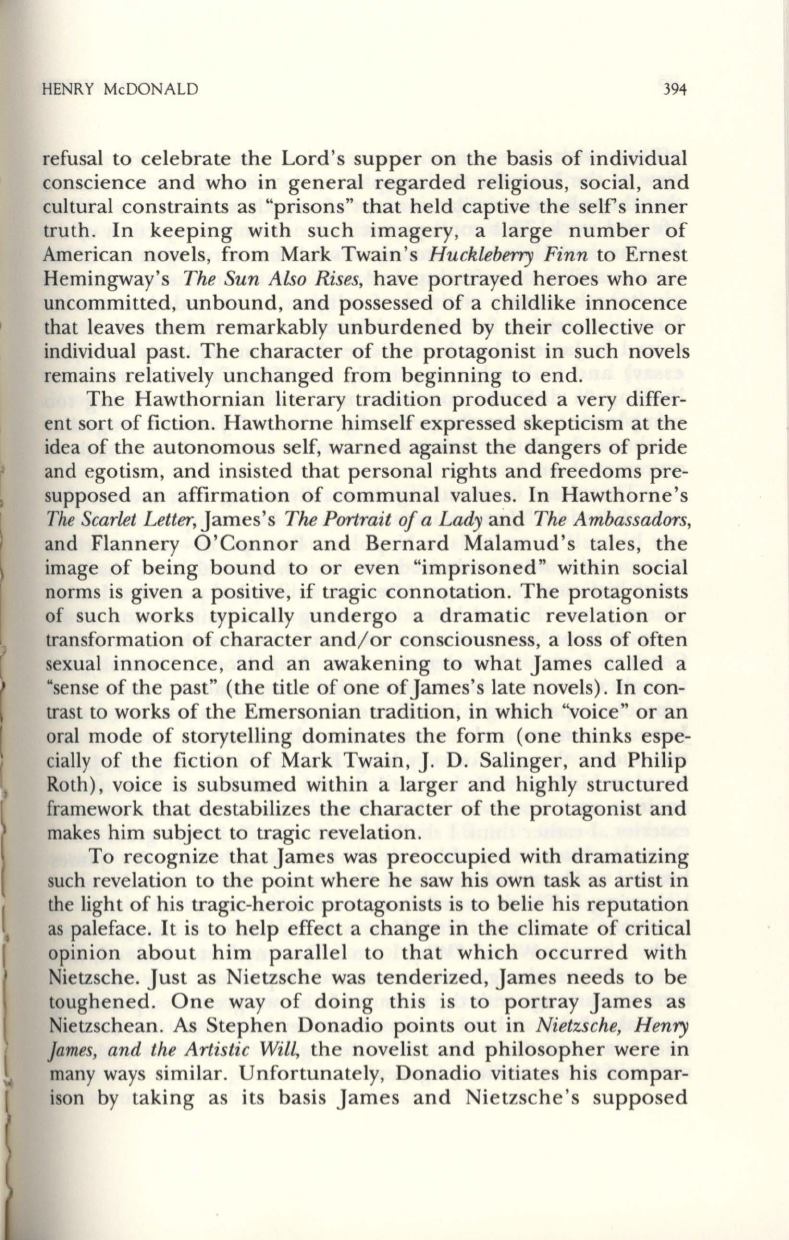
HENRY McDONALD
394
refusal to celebrate the Lord's supper on the basis of individual
conscience and who in general regarded religious, social, and
cultural constraints as "prisons" that held captive the selfs inner
truth. In keeping with such imagery, a large number of
American novels, from Mark Twain ' s
Huckleberry Finn
to Ernest
Hemingway's
The Sun Also Rises,
have portrayed heroes who are
uncommitted, unbound, and possessed of a childlike innocence
that leaves them remarkably unburdened by their collective or
individual past. The character of the protagonist in such novels
remains relatively unchanged from beginning to end.
The Hawthornian literary tradition produced a very differ–
ent sort of fiction. Hawthorne himself expressed skepticism at the
idea of the autonomous self, warned against the dangers of pride
and egotism, and insisted that personal rights and freedoms pre–
supposed an affirmation of communal values. In Hawthorne's
The Scarlet Letter,
James 's
The Portrait of a Lady
and
The Ambassadors,
and Flannery O'Connor and Bernard Malamud ' s tales, the
image of being bound to or even "imprisoned" within social
norms is given a positive , if tragic connotation. The protagonists
of such works typically undergo a dramatic revelation or
transformation of character and/ or consciousness, a loss of often
sexual innocence, and an awakening to what James called a
"sense of the past" (the title of one ofJames's late novels). In con–
trast to works of the Emersonian tradition, in which ''voice" or an
oral mode of storytelling dominates the form (one thinks espe–
cially of the fiction of Mark Twain ,
J.
D. Salinger, and Philip
Roth), voice is subsumed within a larger and highly structured
framework that destabilizes the character of the protagonist and
makes him subject to tragic revelation.
To recognize that James was preoccupied with dramatizing
such revelation to the point where he saw his own task as artist in
the light of his tragic-heroic protagonists is to belie his reputation
as paleface.
It
is to help effect a change in the climate of critical
opinion about him parallel to that which occurred with
Nietzsche. Just as Nietzsche was tenderized, James needs to be
toughened . One way of doing this is to portray James as
Nietzschean. As Stephen Donadio points out in
Nietzsche, Henry
James, and the Artistic Will,
the novelist and philosopher were in
many ways similar. Unfortunately, Donadio vitiates his compar–
ison by taking as its basis James and Nietzsche's supposed


